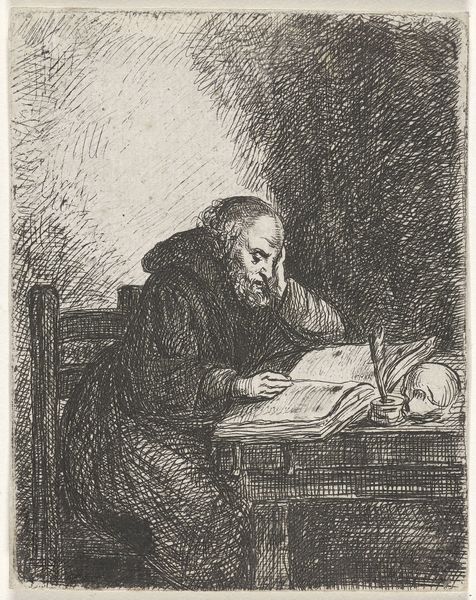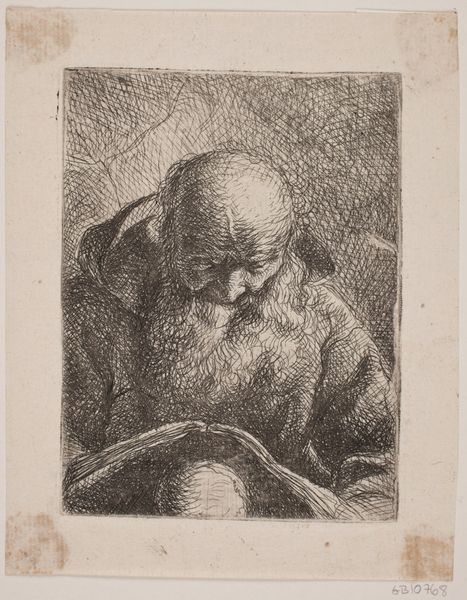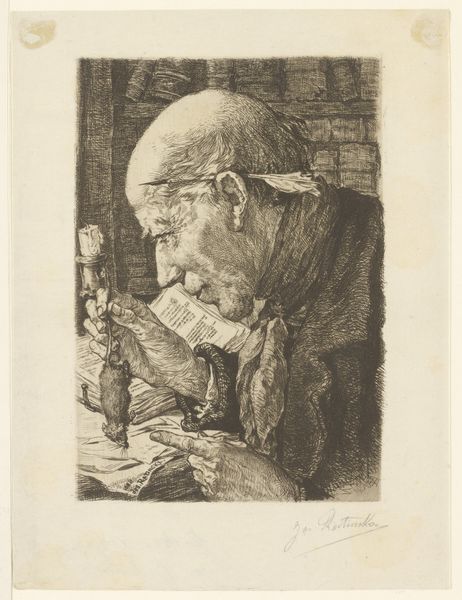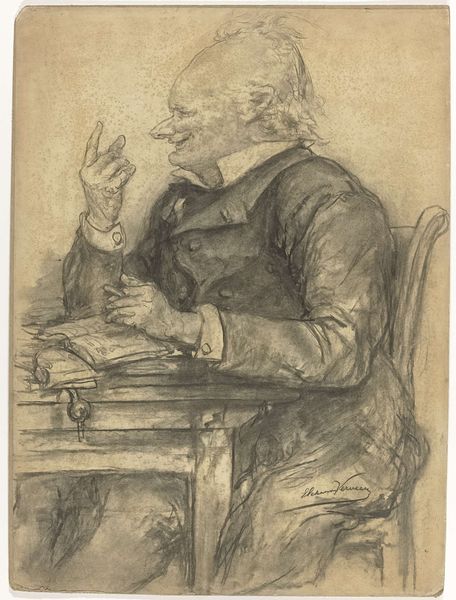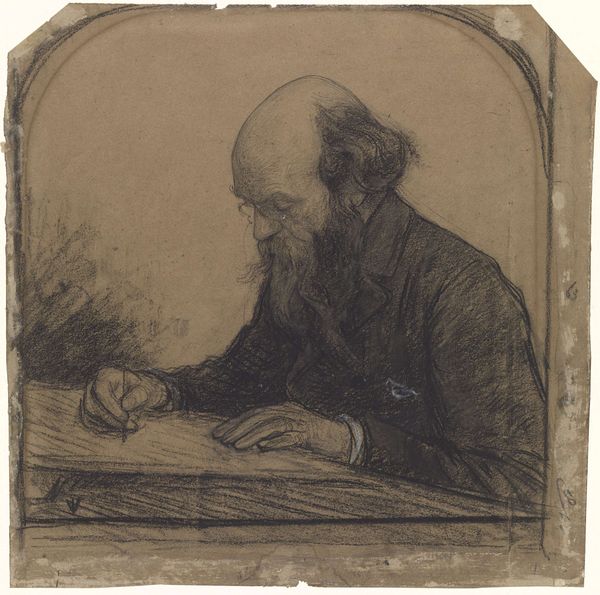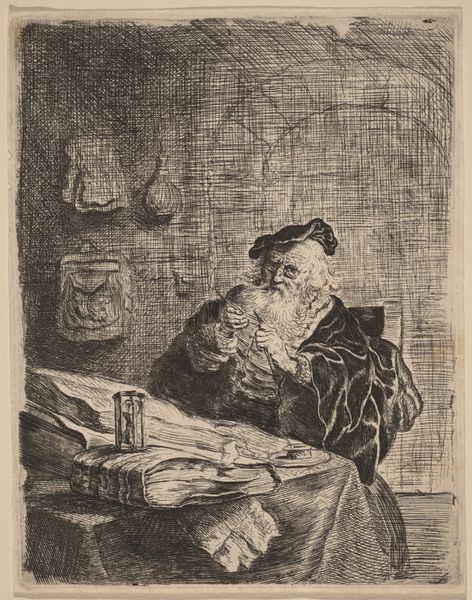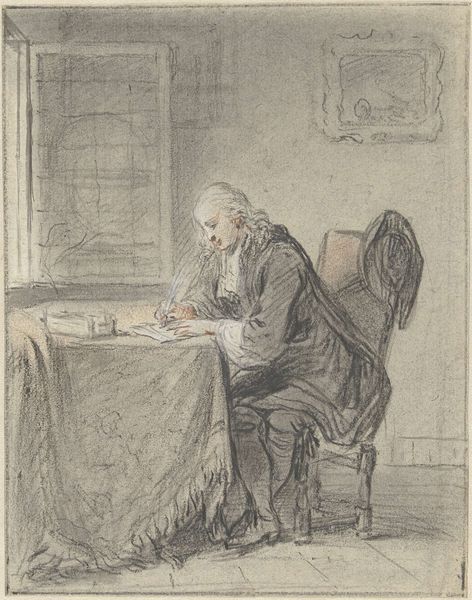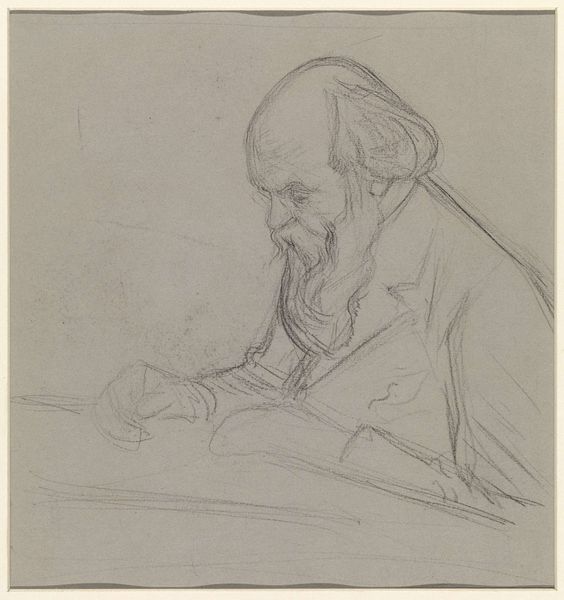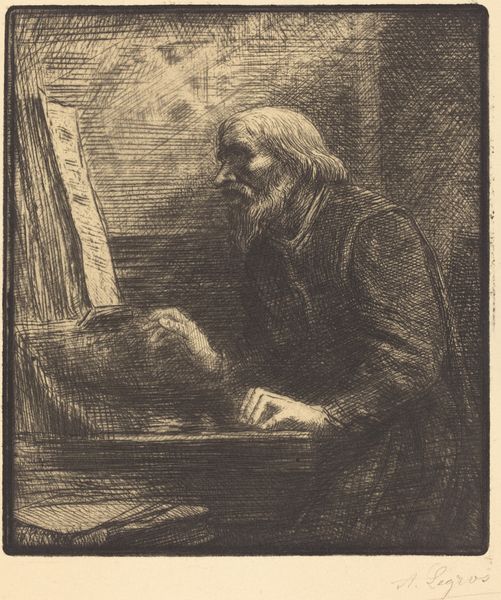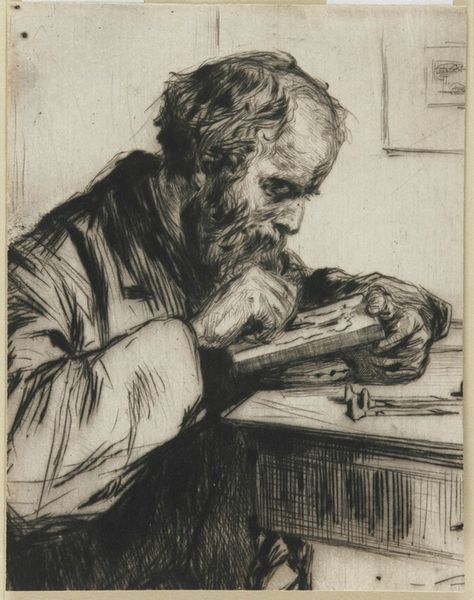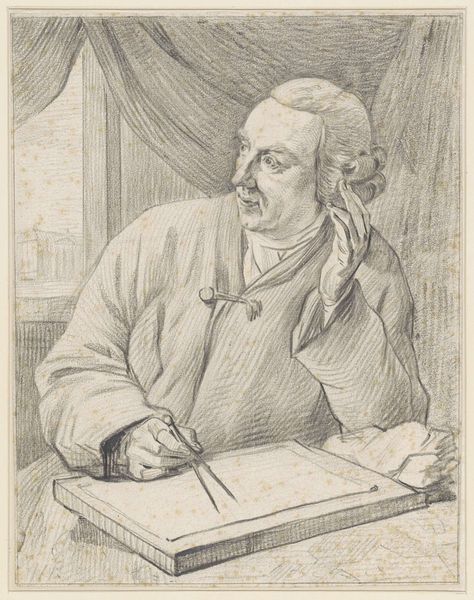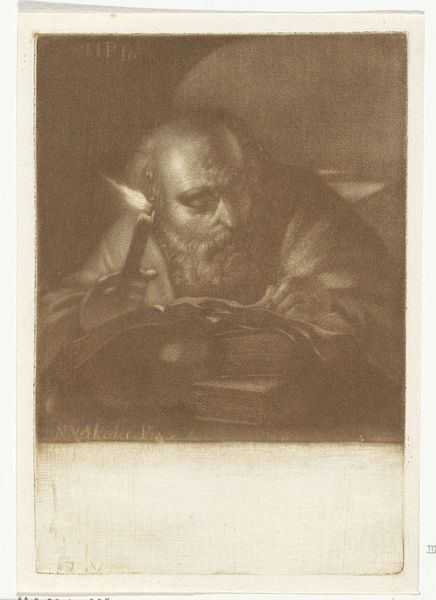
drawing, ink, pen
#
portrait
#
drawing
#
ink drawing
#
pen illustration
#
pen sketch
#
ink line art
#
linework heavy
#
ink
#
ink drawing experimentation
#
romanticism
#
pen-ink sketch
#
thin linework
#
pen work
#
sketchbook drawing
#
pen
#
genre-painting
Dimensions: height 81 mm, width 69 mm
Copyright: Rijks Museum: Open Domain
Curator: Let's consider this work by David van der Kellen, "Lezende Monnik" or "Reading Monk," created sometime between 1814 and 1859. It’s a striking drawing executed in pen and ink. Editor: It has an undeniable air of melancholy, doesn't it? The intense hatching, the solitary figure, it all conveys a deep sense of introspection and perhaps even… weariness. Curator: Absolutely. Note how the artist uses hatching and cross-hatching not just to define form, but to build a palpable sense of texture and light. Look particularly at the heavy linework in the backdrop and in the subject's robe. There is some real experimentation here. The varied lines create volume with only subtle shades, highlighting the materiality of the scene itself. Editor: And the skull there on the desk – a classical _memento mori_. It immediately situates the work within a broader tradition of contemplating mortality and spiritual devotion. Considering the turbulent period in which this piece was created, did sociopolitical instability influence Van der Kellen’s artistic vision? Did the rise of secularism play a role in depictions of religious contemplation? Curator: A keen observation. Certainly, the cultural context is essential. We're looking at a time when Romanticism was flourishing, with its emphasis on individual emotion and the power of the imagination. But it's the very simplicity of the medium, the starkness of the black and white, and that dynamic use of line, that give the piece its undeniable power. It doesn't rely on grand narrative; its strength lies in its visual intensity. Editor: A valuable perspective. While the Romantic movement focused on grand emotive power, one might say Van der Kellen was invested in displaying, perhaps inadvertently, how individual subjects of society still harbored concerns for spiritual well-being, despite overwhelming trends. Curator: Indeed, this dialogue, I think, encapsulates art's ability to reflect complex shifts in value systems. By examining the lines and structure in tandem with historic changes in society, we get the closest to understanding pieces like this.
Comments
No comments
Be the first to comment and join the conversation on the ultimate creative platform.
